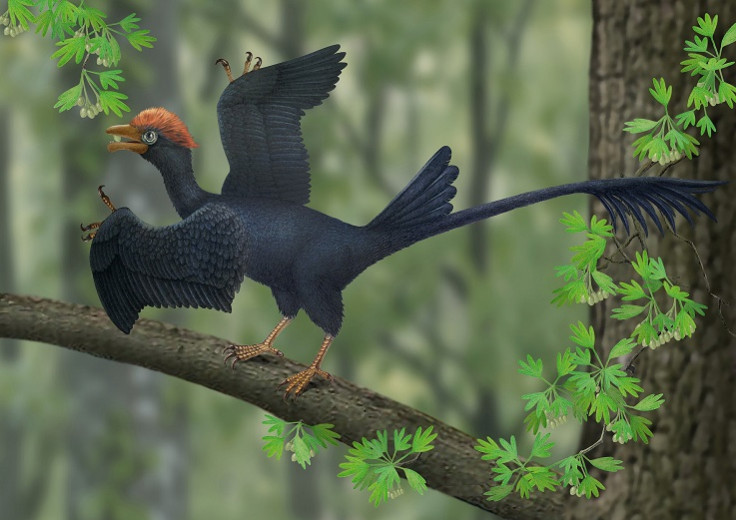Two Tails Better Than One? Ancient Bird Likely Used One For Flight, Another For Show [PHOTOS]
Two heads might be better than one in brainstorming, but in nature, it’s usually a recipe for disaster. But there are some rare cases where evolution has favored double sets of limbs.
An ancient bird that shared the world with dinosaurs had two separate tails, new research claims. In a paper published in the Proceedings of the National Academy of Sciences on Monday, Chinese scientists describe new fossil specimens of the Cretaceous-era bird Jeholornis that show a small, fan-like tail similar to that of modern birds – in addition to a long feathered tail capped off with a spray of feathered fronds.

Chinese Academy of Sciences researcher Jingmai O’Connor and colleagues think the newly discovered smaller tail played some role in flight stabilization, possibly by streamlining the bird’s body and reducing drag. The feathers at the tip of the long tail were probably for ornamentation and courtship.
University of Southern California biologist Michael Habib told New Scientist that the fan tail “would be a reasonably good pitch and roll generator,” but probably would not have been able to control the vertical motion known as yaw. Brown University biologist Stephen Gatesy, who specializes in the evolution of flight, told the magazine that it will be hard to tell just how much the secondary tail helped Jeholornis fly until researchers know exactly how the feathers were attached to the bird’s body.

The arrangement of two distinct tails is an incredibly rare feat – though two-tailed animals sometimes crop up due to genetic mutations. One famous two-tailed scorpion was Pepe, a Baja California bark scorpion that resided at the Sonoran Arthropod Studies Institute in Tucson, Ariz., back in the 1990s. Both of Pepe’s tails were apparently fully functional, and she could hold them arched side by side or crossed over each other. Pepe gave birth to 12 baby scorpions before her death, all single-tailed.

Another two-tailed puzzle comes not from life on Earth, but from outer space. In 2012, Mexican astrophotographer Cesar Cantu snapped a shot of the comet Garradd, which appears to have two opposing tails, one reddish, one bluish.
At Discovery Magazine, astronomer Phil Plait explained that it’s actually quite common to see more than one tail on a comet. Gas from the comet blown back by solar wind typically gives off a blue tail, while denser dust blowing off the comet reflects sunlight and results in a reddish tail. Some comets have been seen with as many as six tails, possibly from big pieces breaking off of the original comet and forming their own tails, according to Plait.

Another dose of double trouble lies in the mystery of just how the four-winged dinosaur Microraptor managed to fly. Scientists have argued back and forth over whether Microraptor kept its fore and hind legs on different levels, like an old-fashioned biplane, or if it splayed its limbs out and allowed the two sets of wings to overlap, the way that insects like dragonflies arrange their wings. The mystery still persists!
© Copyright IBTimes 2024. All rights reserved.











